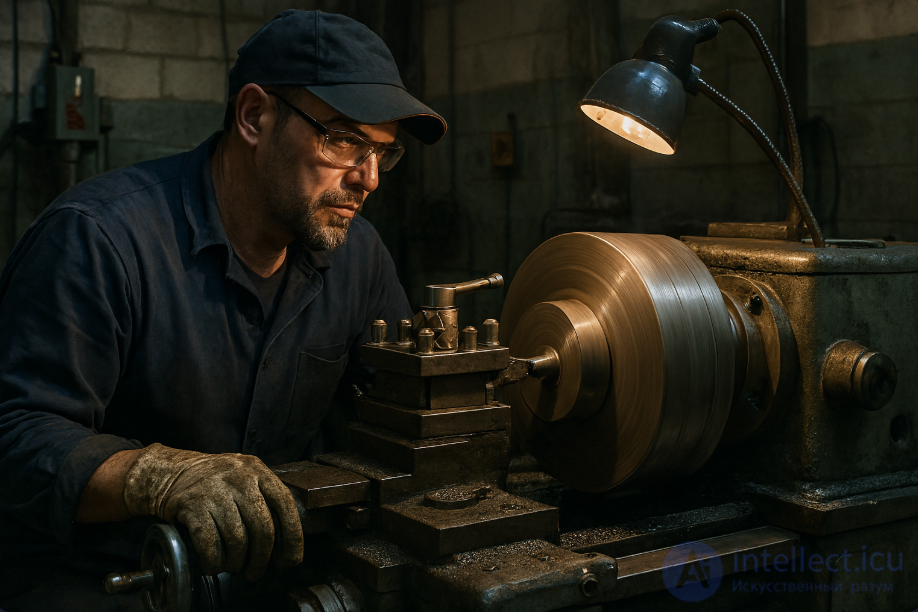Lecture
1. General characteristics of the profession
Makes various parts of metal and other materials for the repair of machines and mechanisms. For this purpose, turning, milling, drilling and grinding machines are used. Details are carried out according to special drawings. The correctness of production is checked with the help of optical devices.

2. Requirements for the individual characteristics of a specialist
The activity requires physical strength, normal visual acuity and hearing, accurate color discrimination, subtle tactile sensitivity, accurate linear and three-dimensional eye, accurate visual-motor coordination (at the level of the movements of both hands), good spatial imagination and visual-figurative thinking.
3. Medical contraindications
The work is not recommended for people with diseases: cardiovascular system (heart defects, heart failure, etc.); digestive organs (peptic ulcer, chronic gastritis, etc.); musculoskeletal system (chronic rheumatism, chest deformities, etc.); nervous system (fainting, meningitis, etc.); organs of vision (reduced visual acuity and color discrimination, violation of binocularity, etc.); organs of hearing (reduced hearing acuity); skin localized on the hands (eczema, etc.).
4. Requirements for training
A general machine operator should know: geometry, trigonometry, physics, drawing (in the secondary school volume), fundamentals of materials science, the theory of resistance of materials, electrical engineering, technical mechanics, technical measurements; the device, the rules of setting up the machines and checking them for accuracy, the device and the rules for using measuring instruments, the technology of heat treatment, sharpening, and instrument finishing; principles for calibrating part profiles, classes of accuracy and purity of processing.
5. Related professions
Sharpener, driller, toolmaker, clerk-fitter, planer, turner-wagon.
Comments
To leave a comment
Professions and specialties
Terms: Professions and specialties